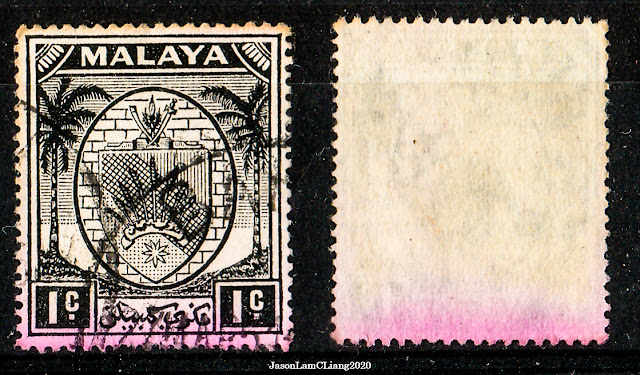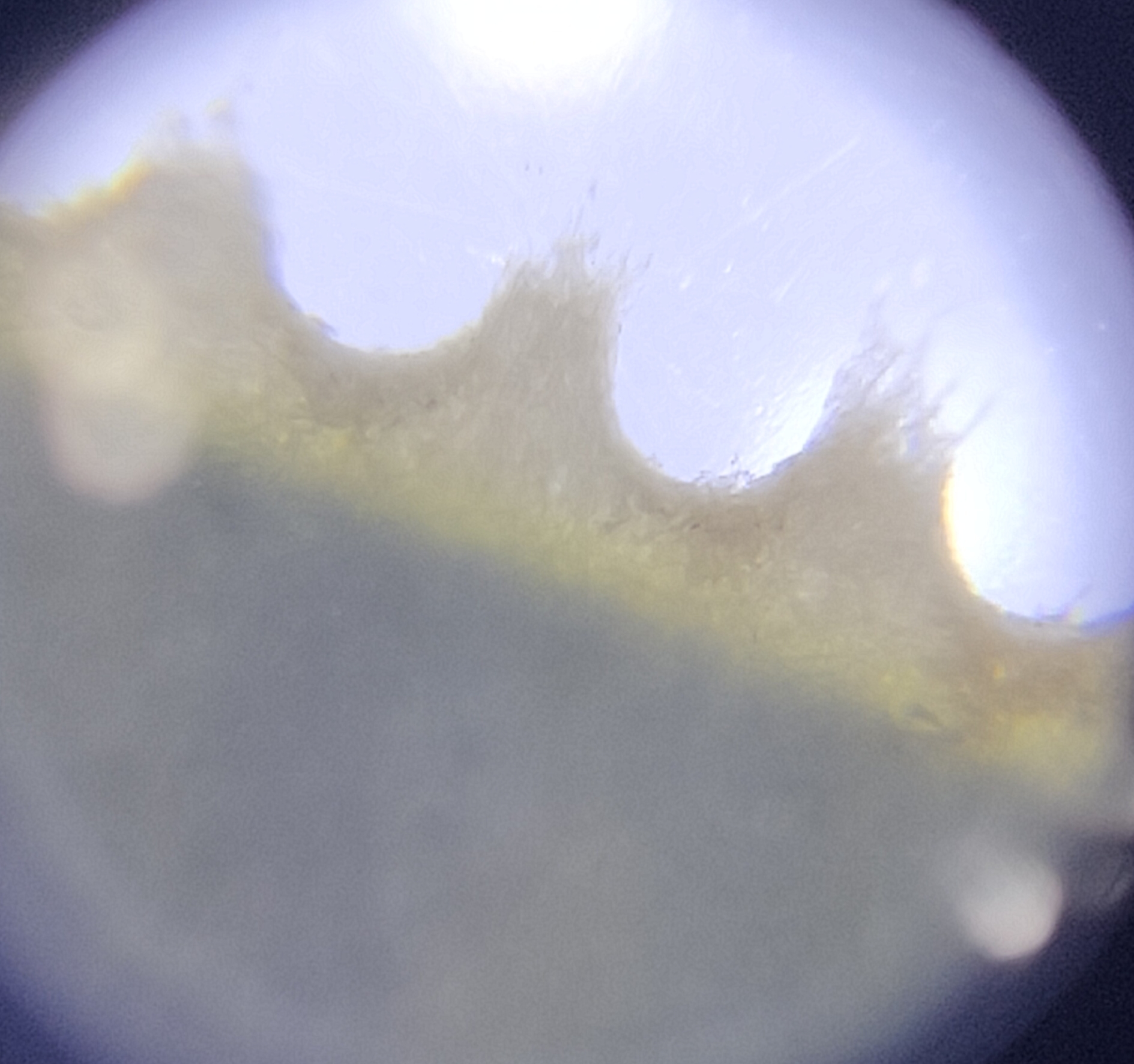Extensively Machin!
Machin stamps were first issued in 5th June 1967, named after the sculptor, Arnold Machin, who designed the portrait of the Queen used on Great Britain stamps. For starters, almost all Machin stamp has a similar design (with exception to the large ones) - an approximate dimension of 2.5cm x 2cm with the portrait of the Queen in the centre of the stamp and the stamp denomination located on the lower left corner. They are small, colorful, and page full of them looks stunning.
Machin stamps are extensive, and overwhelmingly challenging to complete due to its large definitive series and a plethora (an understatement, of course) of varieties. Collecting them on a serious note takes utmost attention to detail because the slightest absence of a dot makes all the difference. We shall look into this later on as a missing dot is also a known variety for some denominations.
In the past week I took the opportunity to look through a small kiloware that I had bought a year ago, with the initial intention of making several framed projects utilizing Machins (I will reveal the project at the end of this article). While I noticed some differences on the position of the bands, I did not know what it was and how frequent these varieties were seen until I discovered a guide on Machins by Robin Harris.
With the guide and stamp forums frequented online, I finally had an idea of sorting and arranging the Machins I hoarded. Here is an overall look on some scans that I did.
Building a Machin stamp collection can be done at various stages according to an individual's desired level of specialization. In summary, I will rank the level of specialization from the easiest to the most challenging.
1. Denomination
You would first need to determine the type of currency used, whether they are pre-decimal (1967-1971) or decimal Machin stamps (introduced in 1971). Pre-decimal stamps bear either 'd' for pence, '/-' for shilling, and the pound symbol. Decimals bear 'p' for pence and the pound symbol. To complete the series, you would need to refer to a stamp catalogue.
 |
| Pre-decimals |
 |
| Decimals - these were scanned in 2021. |
Look out for Non value indicators (NVI) too, which were introduced in 1989. '1st' for First Class domestic mail, '2nd' for Second class domestic mail, and 'E' for mails destined to Europe.
 |
| NVIs |
To get a rough idea of how extensive Machin stamps have spanned over five decades, that's right 50 years and still running, just the decimal stamps alone has 233 face types at the time of writing. These 233 face types excludes First Class, Second Class, and 'E' type Machins. All-in-all, the bigger picture spans 293 face types.
 |
| Here are some with higher denominations. In contrast to the newer decimals released after 2010s, I still have a thing for these older engraved prints. |
2. Size and service type
This includes Machin stamps specified for 'E' (Europe), special delivery stamps, 'Recorded Signed For', 'Royal Mail Signed For', 'Large' stamps, 1st class/2nd class mail. etc
3. Perforation
Small sized Machins have three different perforations: 12.75 x 13 (13 teeth along top edge), 13.5 x 14 or 13.75 x 14 (14 teeth along top edge), and 14.75 x 14(15 teeth along top edge). Without a perforation gauge, it is also possible to manually count the number of teeth on the top edge but I certainly recommend investing in a perforation gauge.
Look out for a 17-pin perforation among blocks of Machins - this will be a great find!
4. Easily noticeable varieties
A quick glance will do the trick.
4a. Security features
In 2009, some Machins began to possess security features which includes wavy 'Royal Mail' text in the background, a security code (two numbers and an alphabet, eg. '18' and 'c'), and a U-shaped slit.
4b. Syncopated perforations
Look out for syncopated perforations - perforations that appear elliptical on the left and right side of the stamp.
4c. Font sizes
For certain denominations, the design of the denomination had narrow numerals. This can be determined by comparing several stamps of the same denomination.
In 2010, the font styles of 5p and 54p appeared differently than the ones issued the previous year.
4d. EME (Electromechanical Engraving) Portrait
By 1997, the portrait of the Queen was electromechanically engraved on the printing cylinder. This had replaced the use of photogravure printing that transfers the image to printing plates. Machins with EME portraits looked sharper with greater detail.
5. Printing method
Machins were mostly printed using photogravure, and later on lithography, while those with larger denominations had intaglio printing.
6. Phosphor Bands
Phosphor bands are noticeable when Machins are held at an angle under the light. They will appear as if a shade darker than the colour of the stamp as light reflects off. Variation in phosphor bands include 2-band appearing in both left and right part of the stamp which measures 4mm (on a stamp) but are referred to as 8mm since the phosphor bands are printing along the vertical perforations. 2-band 9.5mm phosphor bands also exists.
A single-band may also appear on the left, right, or centre of the stamp. There is much more variation when it comes to booklet Machins. Worry not, I will provide the link to a life saver at the end of this article.
Visualizing and studying phosphor bands will require UV light.
7. Position of the denomination
This requires a number of stamps of the same denomination. By closely examining the 'built' of the values, one could distinguish whether they are thick, thin, or very thin in the slightest difference. There are occasions too when Machins have values that are set higher, lower, or closer in terms of its proximity to the bust of the Queen's portrait.
8. Screen values
This variety is the result of an underexposed carbon tissue to the screen during the preparation of printing plates via photogravure. Hence, the values of the stamps that was intended to be completely white has a screen pattern of faint dots in the same color as the stamp.
To study this, a 34p Purple is a great example at it only comes with a screened value.
9. Bust type/ Head type
Though subtle, the types of bust that can be observed from the base of the bust. Type A refers to a flat base while Type B refers to a rounded base.
Type B is further subcategorized into B1 (missing colored dot on lower left corner) and B2 (colored dot is present).
10. Paper type
This is far too challenging. Abort mission.
The different types of paper used in Machin stamps include Fluorescent coated paper (FCP), OBA-Free Non Phosphorized paper (OFNP), Phosphor coated paper (PCP), Preprinted phosphor paper (PPP), Post office paper (POP), Advanced coated paper (ACP), and Original coated paper (OCP)
*Earlier I mentioned the initial intention of using Machin stamps. This is what I meant.
Machins are very common and it's no unusual for many to have the first impression that Machins are cheap fillers. While I do agree that most denominations do not cost an arm to obtain, the real fun lies behind the challenge on distinguishing its varieties.I have a very long way to go considering that I do not specifically collect Machins but I would surely give it a go when I find cheap kilowares.
Thanks for dropping by.
References:
Great Britain Machins by The 'Machin Nut'
Decimal Machin Basic Colour Chart
To know how screened values look like










Comments
Post a Comment